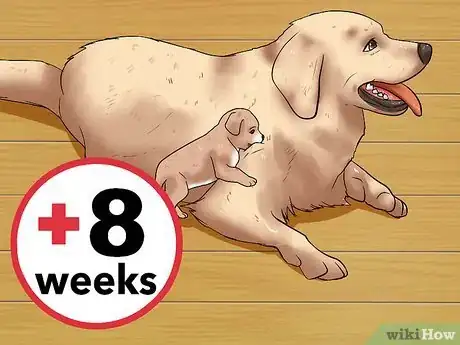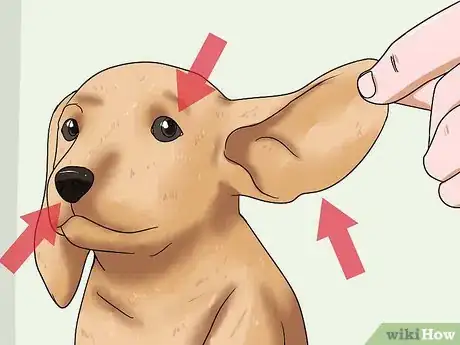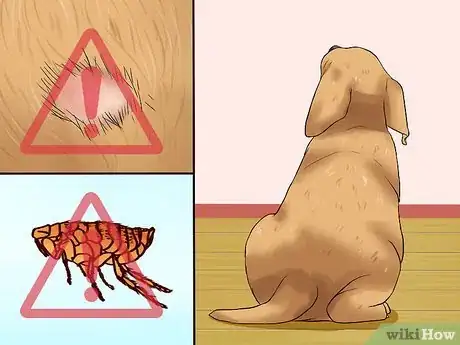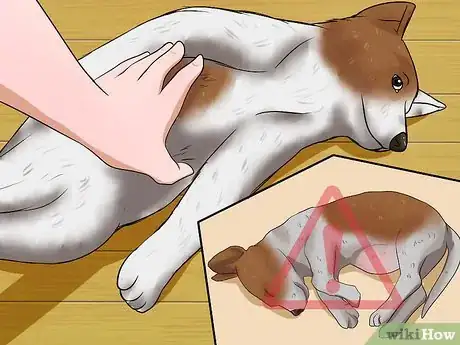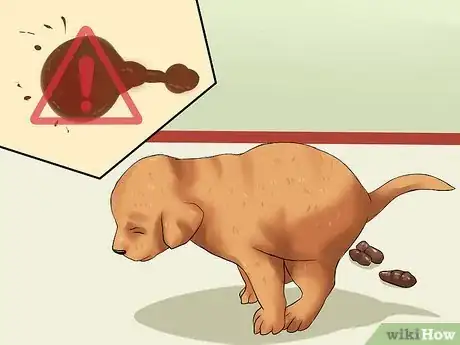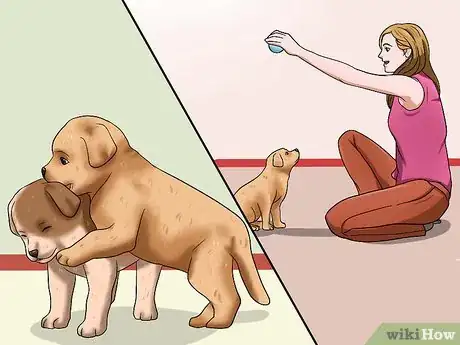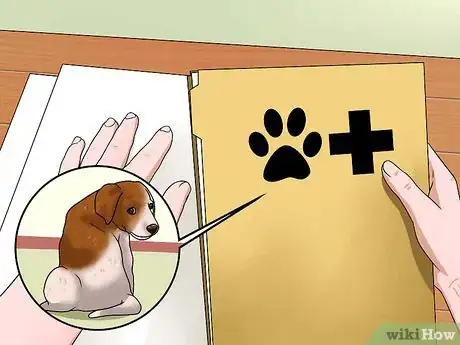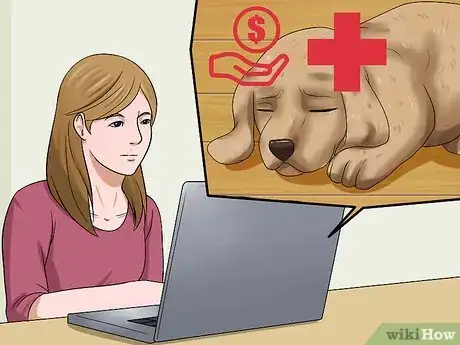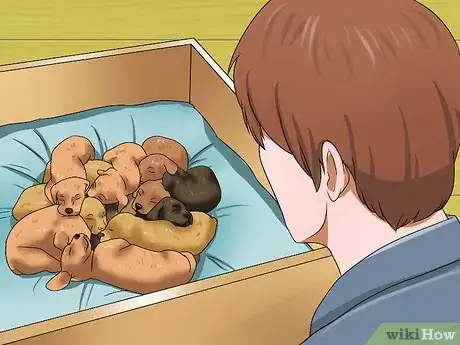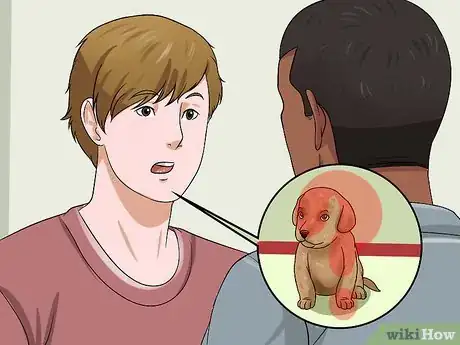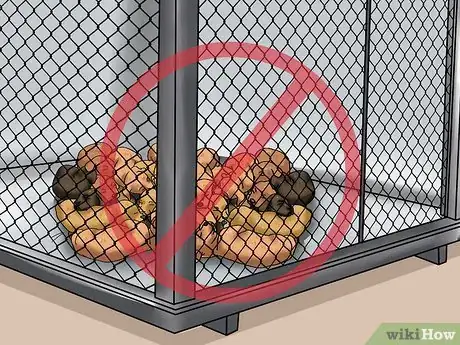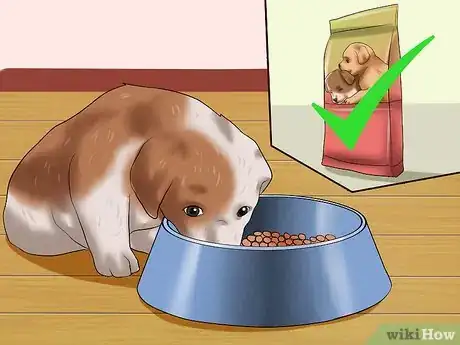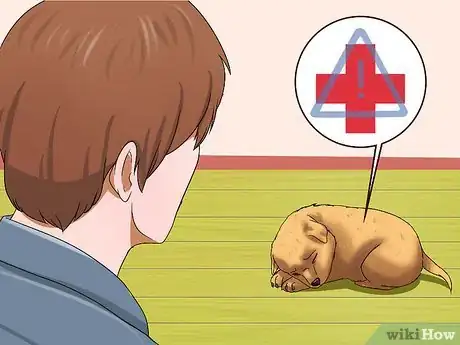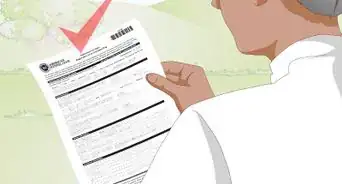This article was co-authored by Brian Bourquin, DVM. Brian Bourquin, better known as “Dr. B” to his clients, is a Veterinarian and the Owner of Boston Veterinary Clinic, a pet health care and veterinary clinic with three locations, South End/Bay Village, the Seaport, and Brookline, Massachusetts. Boston Veterinary Clinic specializes in primary veterinary care, including wellness and preventative care, sick and emergency care, soft-tissue surgery, dentistry. The clinic also provides specialty services in behavior, nutrition, and alternative pain management therapies using acupuncture, and therapeutic laser treatments. Boston Veterinary Clinic is an AAHA (American Animal Hospital Association) accredited hospital and Boston’s first Fear Free Certified Clinic. Brian has over 19 years of veterinary experience and earned his Doctor of Veterinary Medicine from Cornell University.
There are 14 references cited in this article, which can be found at the bottom of the page.
wikiHow marks an article as reader-approved once it receives enough positive feedback. In this case, 99% of readers who voted found the article helpful, earning it our reader-approved status.
This article has been viewed 89,167 times.
Getting a new puppy for your family is an exciting event. As you look for a puppy to add to your family, you need to keep some general puppy health considerations in mind. This way, you can adopt a healthy and happy puppy that will be with your family for years.
Steps
Deciding the Puppy’s Health
-
1Get one at the right age. In general, puppies should be kept with their mothers for at least the first 8 weeks of their lives.[1] If the dog breed is small, such as a Yorkshire terrier, a puppy should live with its littermates or parents for the first 12 weeks so it can mature enough to live with other people and animals.[2] [3]
- If you find a breeder who is selling puppies younger than 8 weeks old, ask the breeder why, since it is too young.
-
2Check the puppy’s cleanliness. As you are looking for a puppy, you should look at how clean the puppy is. This is a good indicator of the puppy's health. When you meet a new puppy, look for clean:
- Ears. Dirty puppy ears may cause ear infections or indicate ear mites. Avoid puppies with ear redness or foul odors.
- Nose. There should be no discharge from the nose, and the puppy should not sneeze profusely or cough. Don’t think discharge is just saliva because the nose may be wet from licking.
- Eyes. There should be no discharge around the puppy’s eyes. They should be bright and alert.[4]
Advertisement -
3Examine the coat. When you are getting a new puppy, its fur should be fresh and clean. It should also be shiny and full. Avoid dogs with bald patches or skin issues. It may be a bit dusty or slightly dirty if the puppy is playing outside with other animals, but it should clean up easily.
- When you play with the puppy, part its fur and look at the skin. It should also be clean and smooth. Make sure there are no fleas and that the puppy doesn’t scratch itself.[5]
-
4Check for a strong body. When you pick up the puppy, check the muscle definition of the legs and arms. All puppy bodies should be strong, even if the dog is a tiny breed. Make sure it isn’t thin with a protruding belly.
- This can be a sign of an untreated worm infestation or serious health issues, such as a heart problem.[6]
-
5Examine the stool. If you have a chance, examine what the puppy’s stool looks like. It should be firm. Loose stools or a messy bottom may indicate diarrhea, which is a sign of larger health issues. You should also check where the other puppies in the litter go to the bathroom to make sure none of the other puppies are sick either.[7]
- Also watch to see if the puppy licks its genital region a lot. This may be a sign of a urinary tract infection.
-
6Watch its energy level. In addition to the physical symptoms, you should evaluate the overall energy level of the puppy. Watch his interaction with other puppies and see how he interacts with you.
- It may take a little time for the puppy to warm up to you and your family, but it eventually will. Sit with it and make time to play with it when you visit. Healthy puppies are curious and want to play if they are awake.
-
7Ask for past vet records. If possible, ask the shelter or breeder to see the past vet records for your puppy. This will ensure that it has been vaccinated and will let you know if the puppy has been fixed or not.
- If the breeder or seller won’t or can’t give you past vet records, seriously rethink getting that puppy. This is a warning sign that something could be wrong.
-
8Ask about socialization. Your puppy's health includes his mental health, and that means it should be properly socialized. Ask about what contact the puppy has had with other people and where the puppies are kept (home environment rather than an outside run). A puppy that is poorly socialized may have major behavioral problems down the road.
Researching Your Options
-
1Learn why health is important. It can be tough to adopt a puppy who becomes ill soon after you get it. Sickness, especially at a young age, can cause many lasting health problems for your puppy, such as stunted growth and diseases that can take continual care. This is not only hard on your puppy; it is hard on your family as well.
- This can be very expensive for you if you don’t notice these health issues before adopting the puppy. For example, the first year of a healthy puppy’s life can cost between $700 and $2,000 in veterinary costs. If your puppy is sick, this amount may double or triple.[8]
-
2Look into shelters. A great place to look for a puppy is a shelter. Check with your local Humane Society or animal rescue society to see what kinds of puppies they have available. These organizations take excellent care of the animals they shelter, so the puppies you see from them will likely be in the best of health.
- The puppies in these places undergo a full exam and are given their vaccinations by a veterinarian.[9]
- These organizations will also not knowingly offer you a sick puppy, but it is always good to be on the lookout for sickly behavior.
-
3Check into a breeder. If you know you want a particular type of puppy, you may want to look into a breeder instead of a shelter. Before you adopt, plan a visit to the breeder’s facility to meet the breeder, the parents of the puppies, and the puppies.[10]
- It is important to assess the kind of environment the breeder has. You will also want to play with the puppy and determine its general temperament and the parents' temperaments. This will help you determine if the puppy is a good fit for you and your family.
- The Humane Society of the United States has a checklist available online that you can use to assess the breeder. This checklist tells you what to look for, such as the number of dog types the breeder breeds and the state of the conditions where the dogs are kept. The breeder should also have a strong relationship with local veterinarians and instruct you how to take care of the puppy once you take it home.
- When you go to meet the breeder, take the checklist with you to make sure you are buying a puppy from a reputable source. Feel free to ask as many questions as you want. Responsible breeders understand since they want to connect with responsible owners as well.[11]
- You may still consider a shelter for a purebred animal. About 25% of animals in shelters are purebred animals.[12]
-
4Be aware of the dangers of puppy mills. Puppy mills are businesses that breed large amounts of puppies and house them in kennels. These puppies are often sick and poorly socialized.[13] When the dogs are housed in kennels, they miss out on a critical socialization period that allows them to become mentally healthy dogs.[14]
- Not only that, the puppies and their parents are often housed in unsanitary and crowded conditions, are not given proper veterinary care, and the dogs being bred may have behavioral or health problems.[15]
- Reputable breeders do not sell to pet shops.[16] Avoid buying a puppy online, as there is absolutely no regulation as to where the puppy has come from, and you will be unable to check the puppy or its parents before you make your purchase.
Taking Care of Your New Puppy
-
1Take your new puppy for a checkup. You should take your new puppy to the vet within 48 hours of adopting it. Most breeders, shelters, and rescues have a small window when they guarantee the puppy's health, so it is best to get it checked during this time in case there is something wrong with it. Even if there are no guarantees, you should still get the puppy checked within this time frame so you can catch any possible health problems as soon as possible.
- Your vet will explain the necessary vaccinations, feedings requirements, and any other health problems facing your puppy, such as worms and parasites.
- Feel free to ask your vet any questions you have about owning the specific breed you have or about puppies in general.[17]
-
2Get the right food. When you adopt your puppy, ask the breeder, shelter, or rescue what they were feeding your puppy while it lived there. This will help make the transition easier on your puppy. The puppy will already be stressed because of the change in environment and leaving its family, so making sure its food stays constant will help make any stomach issues it experiences better.
- Try to at least start the puppy on the food it was accustomed to before. If you want to change its food, do so gradually by weaning it off the other food and feeding it more of the food you want it to have. Just make sure you are feeding it puppy food, not adult dog food.[18]
- If the puppy has diarrhea but seems healthy otherwise, don't worry. This is a common stress response.[19] However, if the diarrhea continues for more than 24 hours or if the puppy seems unwell, take the puppy to a veterinarian.
-
3Watch for sickness. Some diseases are common in puppies, such as parvo, distemper, kennel cough, and gastrointestinal issues. The more severe conditions, such as parvo and distemper, have vaccinations that fight against them. This means you must get your puppy vaccinated as soon as possible.
- Other issues can be combated with a healthy and balanced diet. This helps keep the puppy's immune system up, which helps it fight any possible disease that could attack it at such a young age.
- If you notice any change in behavior, any general listlessness, or excessive diarrhea or vomiting, take your puppy to the vet immediately. The earlier you catch an illness, the better the puppy's chances are.[20]
References
- ↑ Brian Bourquin, DVM. Veterinarian. Expert Interview. 20 December 2019.
- ↑ http://www.humanesociety.org/animals/dogs/tips/puppy_behavior_basics.html
- ↑ http://pets.webmd.com/dogs/guide/how-to-choose-a-healthy-pure-bred-puppy?page=3
- ↑ http://pets.webmd.com/dogs/guide/how-to-choose-a-healthy-pure-bred-puppy?page=3
- ↑ https://www.cesarsway.com/dog-fur-tells-a-lot-about-a-dogs-health/
- ↑ www.merckvetmanual.com/pethealth/dog_disorders_and_diseases/heart_and_blood_vessel_disorders_of_dogs/congenital_and_inherited_disorders_of_the_cardiovascular_system_in_dogs.html
- ↑ http://pets.webmd.com/dogs/guide/how-to-choose-a-healthy-pure-bred-puppy?page=3
- ↑ www.kiplinger.com/slideshow/spending/T063-S001-9-costs-every-dog-owner-should-budget-for/index.html
- ↑ http://www.humanesociety.org/issues/adopt/tips/adopting_from_shelter_rescue.html?credit=web_id93480558_web_globalfooter
- ↑ www.humanesociety.org/issues/puppy_mills/tips/finding_responsible_dog_breeder.html
- ↑ http://www.humanesociety.org/assets/pdfs/pets/puppy_mills/find_responsible_dog_breeder.pdf
- ↑ http://www.humanesociety.org/issues/adopt/tips/adopting_from_shelter_rescue.html?credit=web_id93480558_web_globalfooter
- ↑ http://www.pupquest.org/about-puppy-farms-mills.html
- ↑ http://www.pupquest.org/about-puppy-farms-mills.html
- ↑ http://www.pupquest.org/about-puppy-farms-mills.html
- ↑ http://www.pupquest.org/about-pet-shops.html
- ↑ http://pets.webmd.com/dogs/guide/new-puppy-faq
- ↑ Brian Bourquin, DVM. Veterinarian. Expert Interview. 20 December 2019.
- ↑ http://pets.webmd.com/dogs/guide/new-puppy-faq?page=3
- ↑ http://www.petmd.com/dog/centers/nutrition/evr_dg_parvo-and-other-common-puppy-illnesses
About This Article
To choose a healthy puppy, check that it's clean around the ears, eyes, and nose. You should also examine its coat to make sure it's full and shiny, while keeping an eye out for bald patches, which are a sign of skin problems. Additionally, make sure the puppy is muscular and isn't thin with a protruding belly, which indicates poor health. Before making a final decision, take time to play with the puppy so you can see if it's curious and full of energy, like all healthy puppies should be. For tips on how to take care of your new puppy, keep reading!
